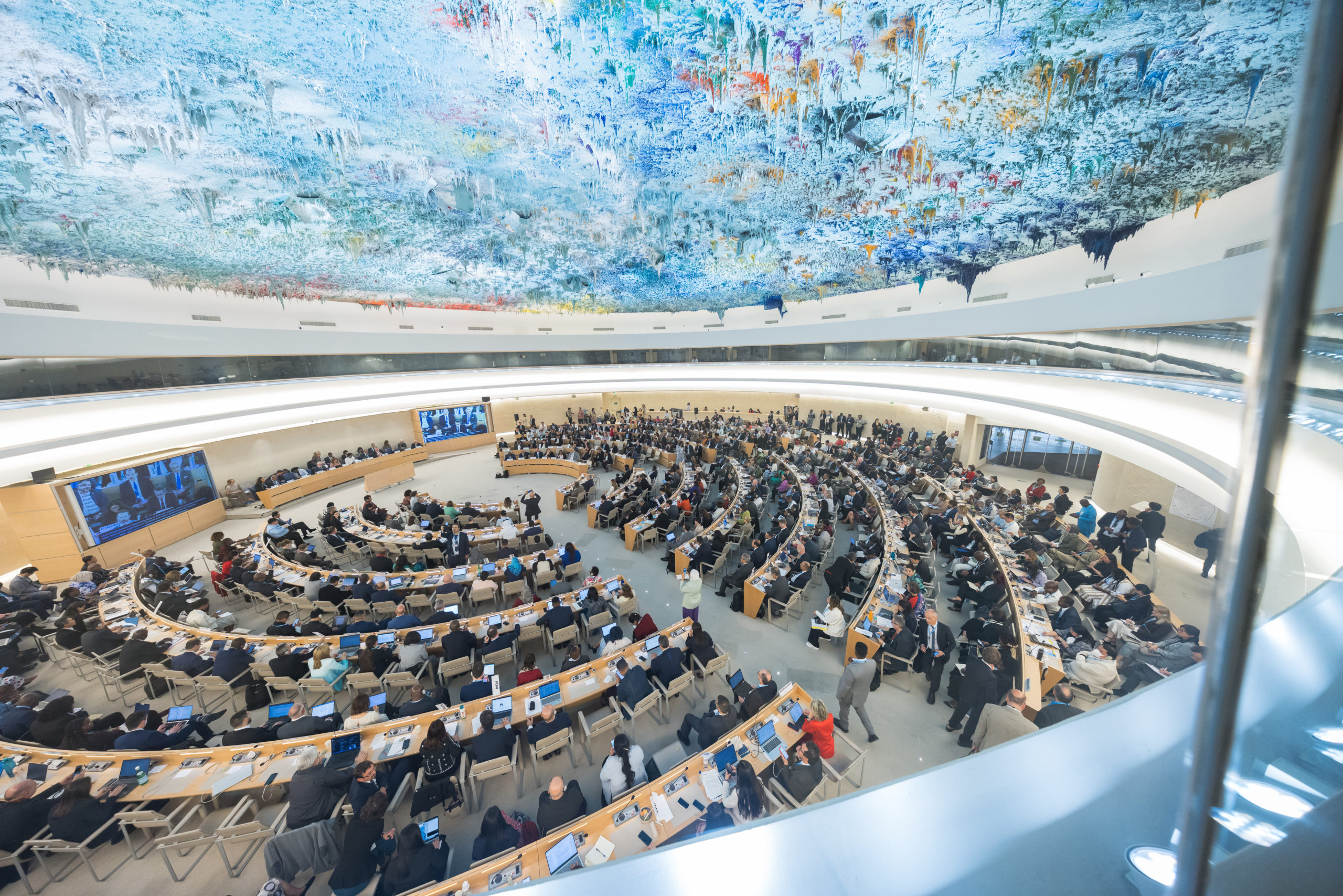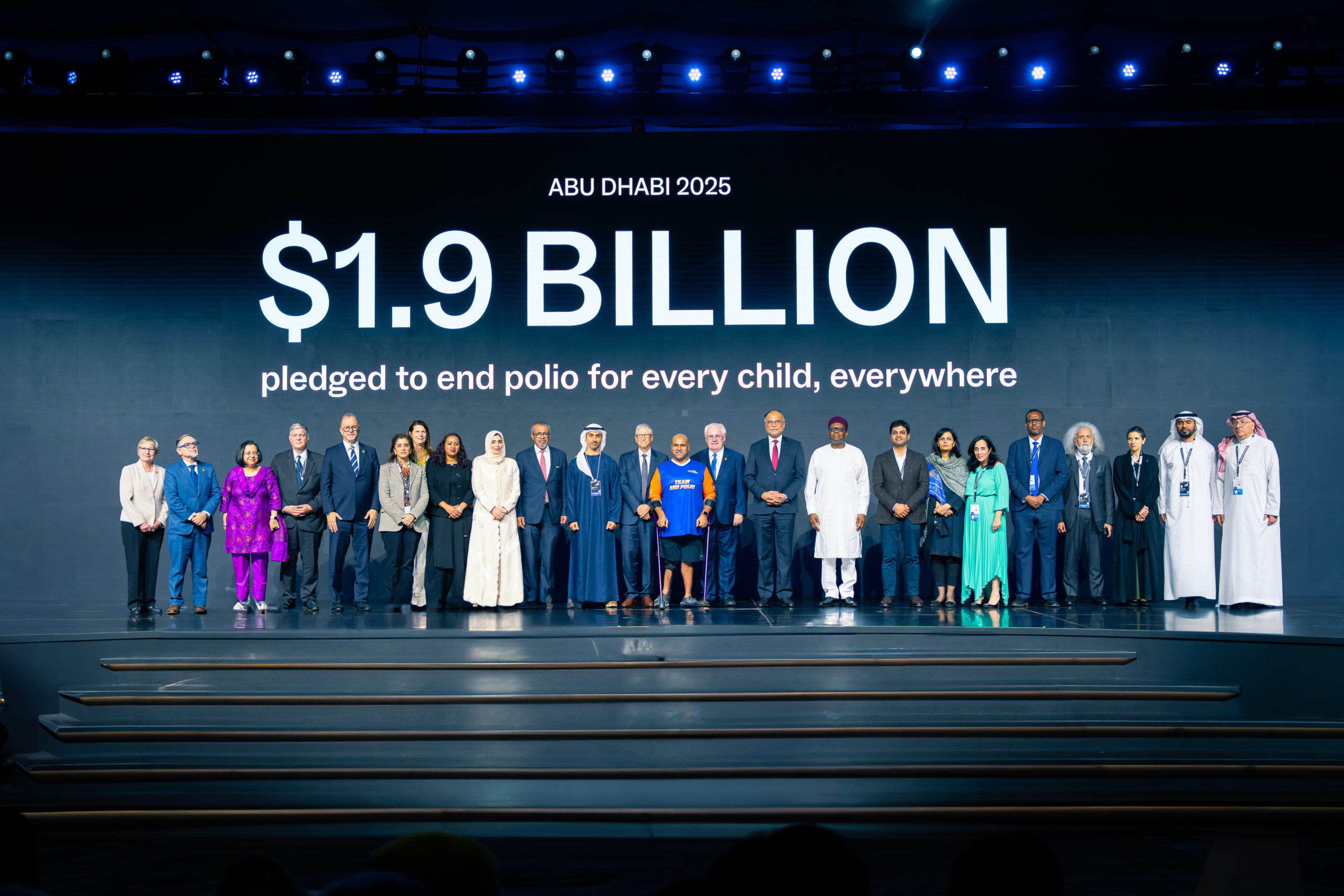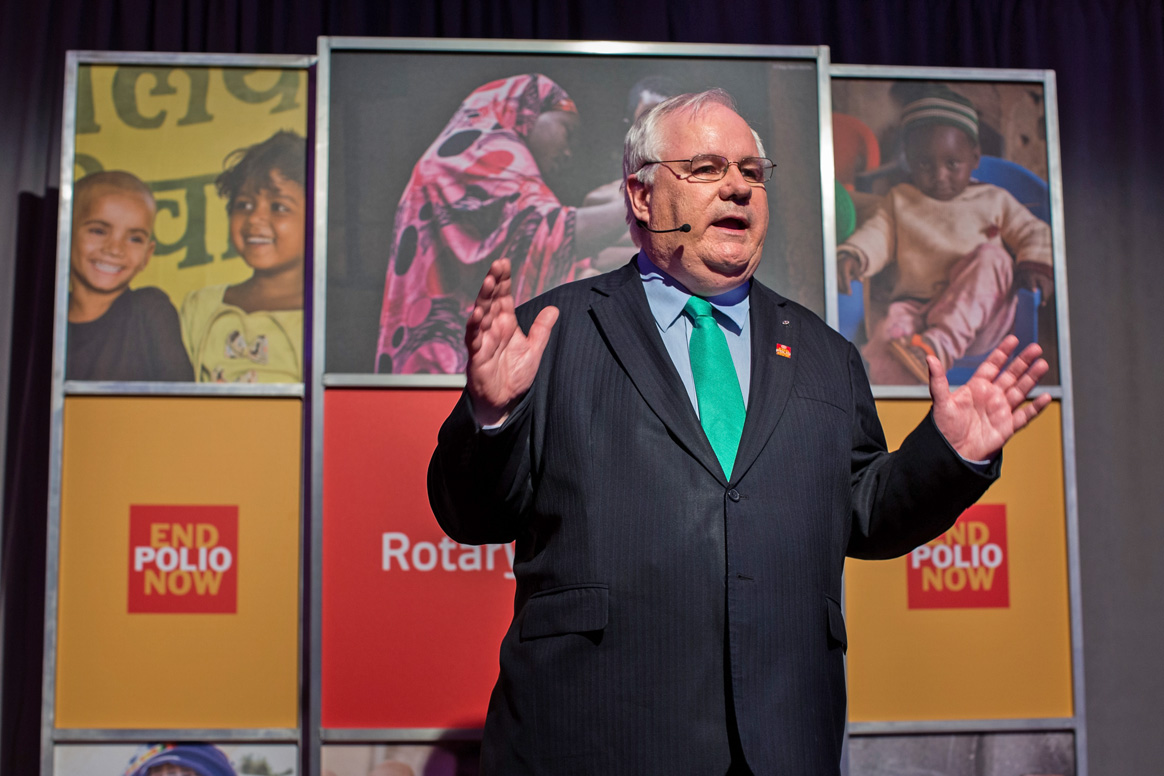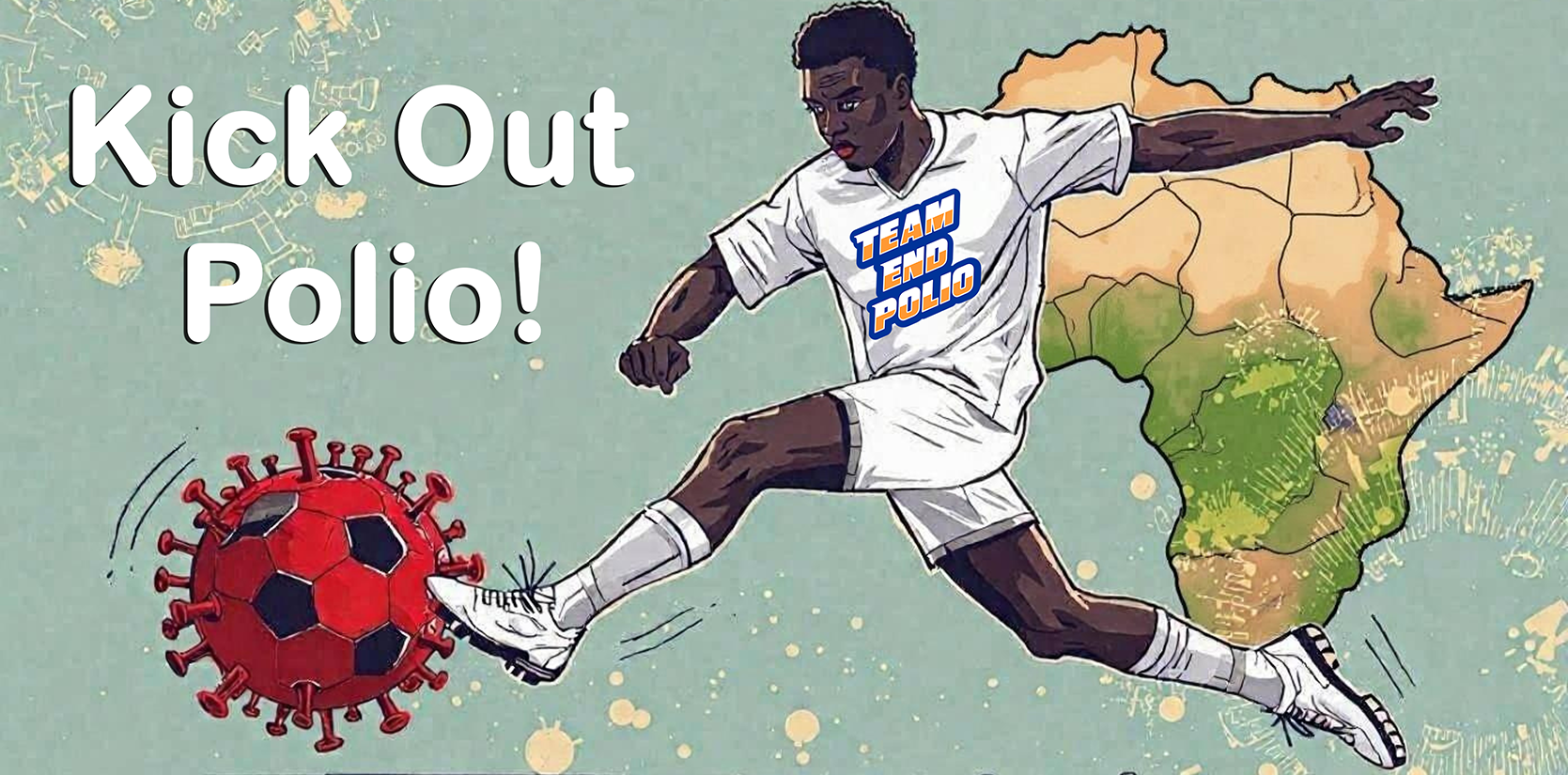
Against a backdrop of shifting geopolitical dynamics, economic uncertainty and ongoing humanitarian emergencies, global public health is undergoing upheaval. As delegates gathered in Geneva this week for the 2025 World Health Assembly (WHA), the urgency of sustaining momentum in disease eradication efforts was clear. Among the many pressing issues discussed, polio eradication remained a top priority.
Member State remarks and Rotary International’s call to action
During the Assembly, Member States reaffirmed their full support for achieving and sustaining a polio-free world, acknowledging WHO and its partners’ efforts to see the job done. Voicing concern about ongoing variant outbreaks and the need for interruption of wild poliovirus transmission in Afghanistan and Pakistan, Member States called for continued resourcing to the effort, and smart integration of polio functions within broader public health services. Other key themes were strengthened routine immunization – including with inactivated polio vaccine – through coordination with GAVI, and the needs for strong oral polio vaccine cessation planning and the safe and secure containment of polioviruses in research and vaccine manufacturing facilities.
As discussions unfolded, Rotary International – a founding partner of the Global Polio Eradication Initiative – highlighted the urgent need for sustained political and financial support to ensure the final push toward eradication. Judith Diment MBE, Chair of Rotary International’s Polio Eradication Advocacy Committee, confirmed Rotary’s ongoing commitment and urged WHO Member States to remain “resourceful, resilient, and resolved” to see eradication achieved, stressing the dangers of faltering at this stage of the game.
WHO African Region: Progress and ongoing challenges in the Lake Chad Basin
Encouragingly, circulating variant polioviruses – which predominantly affect the African continent – continue to show a downward trend. In 2024, 312 cases were recorded globally, compared to 529 in 2023. This year, 52 cases have been reported to date.
In the WHO African Region, efforts to stop the spread of variant polioviruses have intensified. In the first quarter of 2025 alone, ten African countries have conducted vaccination rounds, protecting nearly 54 million children with at least one dose of polio vaccine.
The welcome appointment of Professor Mohamed Yakub Janabi as the new WHO Regional Director for Africa promises renewed leadership to the region’s fight against polio.
A major milestone was celebrated during the Assembly: the successful closure of the variant poliovirus type 1 outbreak in Madagascar. This achievement reflects the unwavering commitment of African governments, health workers, communities, and GPEI partners in stopping the virus and protecting children across the region.
However, significant challenges remain in the Lake Chad Basin, one of the sub-regions most affected by the circulation of variant poliovirus type 2. A combination of operational challenges, insecurity, inaccessibility, and climate-related disruptions allows the virus to thrive among under-immunized populations. Cross-border population movements through porous borders further complicate eradication efforts, necessitating a robust, urgent, and coordinated response among affected countries to ensure every child is reached with polio vaccine.
WHO Eastern Mediterranean Region: The endemic frontline, Gaza, and Horn of Africa
Meanwhile, in the WHO Eastern Mediterranean Region, Afghanistan and Pakistan remain the last strongholds of wild poliovirus. Data for 2024 shows an increase in wild poliovirus cases in both countries, with Pakistan reporting 74 cases, and Afghanistan 25, compared to 6 cases per country in 2023.
While renewed and strengthened operational approaches to urgently reverse this trend are already having an impact, the situation remains fragile. This year presents a critical opportunity to capitalize on progress and finally end transmission.
Gaza, occupied Palestinian territory, was a key focus at the Assembly as Member States underscored the imperative to ensure aid, including vaccinations, be allowed to enter. No further cases have been reported since 2024, but the risk of resurgence remains high. WHO, alongside its partners, was commended on efforts to negotiate a humanitarian pause for a vaccination campaign that reached more than 560,000 children – a critical public health intervention delivered under extraordinarily difficult conditions. WHO reinforced the call for an immediate ceasefire and unimpeded flow of humanitarian aid at scale to protect children’s health and ensure every eligible child is reached. With its partners, WHO remains on standby to support additional rounds as soon as access can be secured.
Momentum to end the ongoing variant poliovirus transmission in the Horn of Africa reached an all-time high with health ministers from Djibouti, Ethiopia, Kenya, Somalia, South Sudan, and Yemen meeting with GPEI partners to renew their promise to end the protracted polio outbreaks in the region.
Polio transition planning and post-certification strategy
At the Assembly, Member States discussed ensuring the long-term sustainability of public health infrastructure and assets, including integrating critical polio eradication functions into national health systems as part of the transition process. In the context of reduced funding for global health, transition planning is more vital than ever to ensure that valuable polio knowledge, assets, and infrastructure are retained and repurposed in polio-free countries to build strong, resilient, and equitable health systems. In this context, countries also discussed updating the strategy for sustaining a post-polio world.
Polio eradication highlighted at WHA side events
Polio eradication was also featured in a WHA side event on outbreaks, where global health leaders discussed the broader challenges of disease resurgence, including measles and cholera. The event emphasized the need for investments, innovations and integration to strengthen surveillance, improve vaccine coverage, and prevent outbreaks. Speakers highlighted the role of routine immunization, cross-sector partnerships, and innovative techniques – including wastewater monitoring and digital disease modeling for surveillance and the use of electronic registries for immunization in low-resource settings – as critical tools in controlling preventable diseases.
Other side events also highlighted the importance of integration and sustained political commitment. A high-level session on defeating malaria, meningitis and polio through integrated solutions showcased how joint campaigns are reaching children in fragile settings. Meanwhile, the first in-person meeting of the Polio Legacy Challenge, sponsored by Qatar, Saudi Arabia and the UAE, demonstrated strong regional solidarity and a shared vision to support health systems and polio eradication in Afghanistan.
Recognizing leadership in public health
A highlight of this year’s Assembly was the awarding of WHO’s Dr. Lee Jong-wook Memorial Public Health Prize to Professor Helen Rees of South Africa, for her outstanding contributions to public health. Professor Rees, a globally recognized expert in infectious diseases and vaccine policy, and chair of the International Health Regulations Emergency Committee, was honored for her decades of leadership in immunization and disease prevention.
Looking forward: Ensuring resilient funding to achieve eradication
As the WHA concludes, the world stands at a crossroads – sustained commitment and strategic investments are essential to ensure polio eradication becomes a reality. At the Assembly, stakeholders were urged to consider innovative financing approaches, through debt swaps, catalytic investments, or integrating polio into broader health financing instruments. This will allow for a more diverse, resilient funding base, critical to sustaining operations in the final mile, while improving children’s overall immunity and ensuring health systems in developing countries remain strong.
As this decisive moment in public health unfolds, one truth remains unwavering: polio eradication can and must be achieved. The GPEI and its partners reaffirmed their dedication to delivering a world free of polio – a global public good from which all nations will benefit equally. But this final stretch requires resilience, vigilance, and the collective will to see the mission through. Now is the time to stay the course, ensuring that no child, anywhere, is left vulnerable to this preventable disease.



